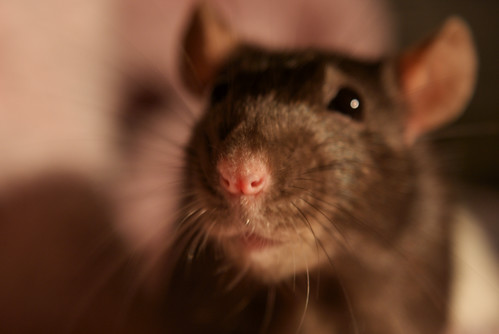 Photo: The bosshogEach year, in the war against pests, thousands of tonnes of pellets laced with 1080 poison are dropped into New Zealand bush and national parks.
Photo: The bosshogEach year, in the war against pests, thousands of tonnes of pellets laced with 1080 poison are dropped into New Zealand bush and national parks.
The country's deeply divided on the issue with opponents staging protests, making a documentary and recently, one man going on a hunger strike to stop the practice.
Despite all the opposition the Department of Conservation (DOC) claims it has no choice because of the difficult terrain.
"You have to take the technique that matches the landscape... and aerial 1080 is the one that does that," says Mike Ambrose from the DOC.
Opponents claim it's an indiscriminate killer.
"It's something we should be ashamed of," says Hugh Barr from Deerstalkers New Zealand.
Rattus rattus, the ship rat, is what the DOC is trying to eradicate in Canterbury's Hawdon Valley as it's threatening the rare Orange Fronted Parakeet.
DOC argues trapping did not work in the last rat plague.
"We trapped about 800 rats and we lost 95% of the Orange Fronted Parakeet population in three months," says Doc Ranger John Kearvell.
These days they drop 2 kilograms of bait per hectare; Back in the seventies they used 25.
The pellets are mainly made up of cereal, but contain enough 1080 poison to kill a possum or a rat.
Critics say it kills animals and native birds.
"The problem with 1080 is it kills just about every living thing to some extent," says Barr.
Seven Kea died recently after a 1080 drop on the West Coast of the South Island.
DOC staff are monitoring 13 Kea, which have been fitted with transmitters, to see if they survive.
Staff are realistic. Rats also threaten Kea.
"Losing a couple of birds is bad for the programme, but you've got to look at the benefits of the population in that the breeding success could be really increased this year for the whole Kea population in the whole Hawden Valley," says DOC Ranger Paul von Klink.
Critics disagree.
"It's not a long term solution. We've got to find other solutions to using 1080 in this way," says Barr.
The big users spend several million dollars a year funding research into alternatives.
So far, vaccines for controlling possums, new toxins and deer repellant bait have all been looked at.
The latest break-through is a re-setting trap for stoats and rats.
All sound promising, but according to the DOC they are not yet as effective as 1080.
"It's the best tool we've got at the moment and it's a bit of a necessary evil," says von Klink.
Necessary, the DOC says, until there's a viable alternative.